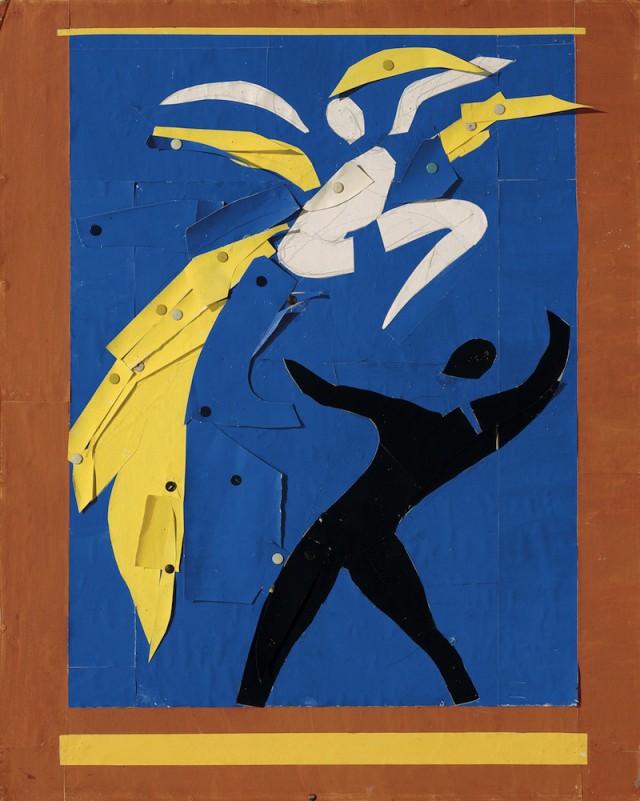
Henri Matisse: The Cut-Outs opened a few days ago at the Museum of Modern Art in New York, and this is one of its crucial pieces: A study called Two Dancers, made in 1937-38 for the stage curtain used in the ballet Rouge et Noir. It’s what launched Matisse into making art from painted paper that he cut out and arranged into compositions. It also gets at something else: The most interesting thing about Matisse’s cut-outs is the hectic, Dionysian process of arranging and rearranging that gets him to his final image. Two Dancers, with its crude construction and visible thumbtacks, hints at the “performance” that went into its making, and at the contingency that implies. It links Matisse’s cut outs to the earlier, “aleatory”, Dada collages of Jean Arp, for which the artist threw down bits of colored paper and declared their accidental arrangement his finished composition. (That’s Arp’s story at least, although there’s some doubt about the date of those pieces and how they were really made.) When Matisse streamlines his process to end up with elegant images in other media–prints or stained glass or even textiles–pure decoration starts to take over. It’s too Apollonian for its own good. (Musée national d’art moderne/Centre de création industrielle, Centre Georges Pompidou, Paris. Dation, 1991. © 2014 Succession H. Matisse / Artists Rights Society (ARS), New York)
For a full survey of past Daily Pics visit blakegopnik.com/archive.